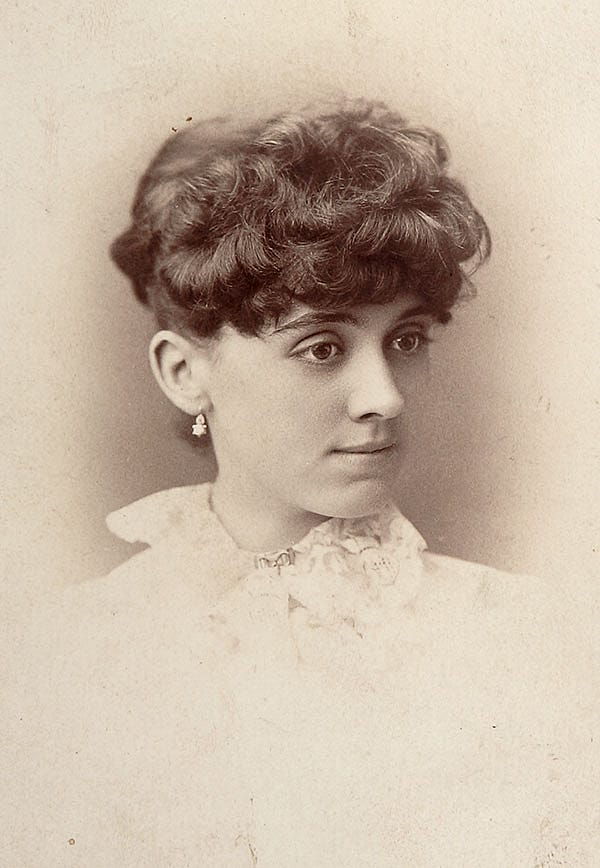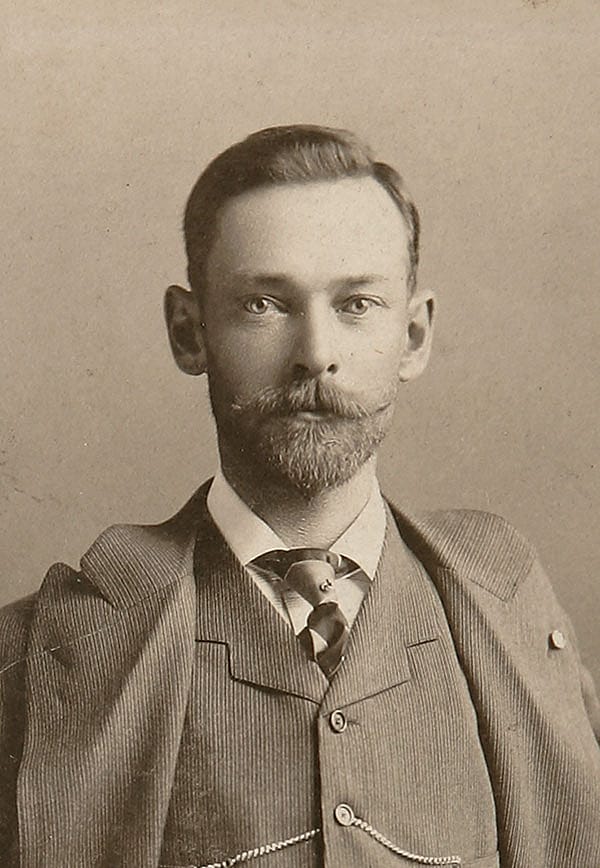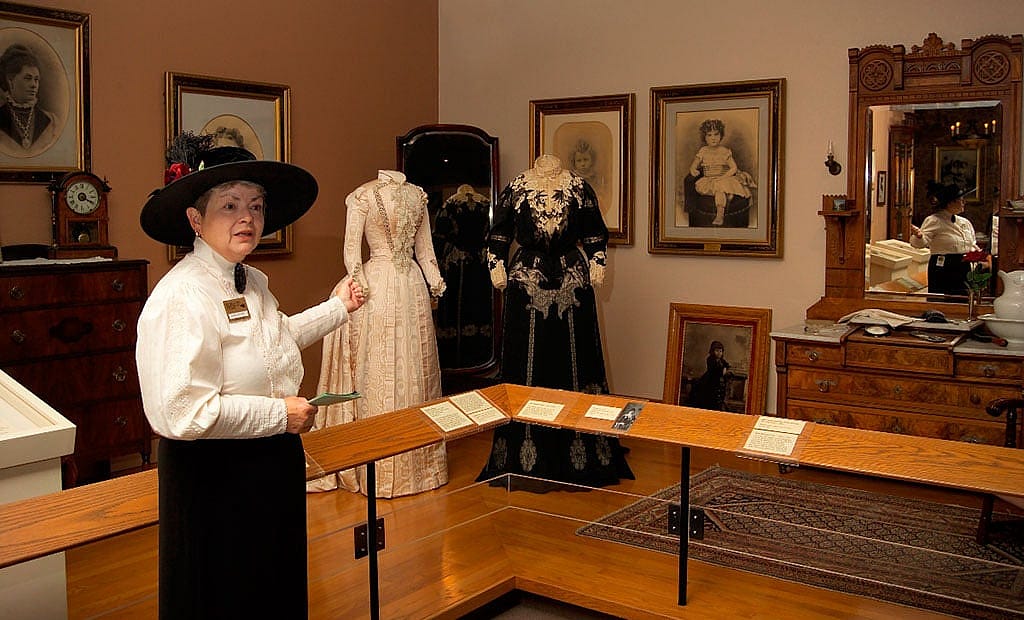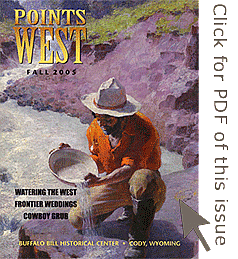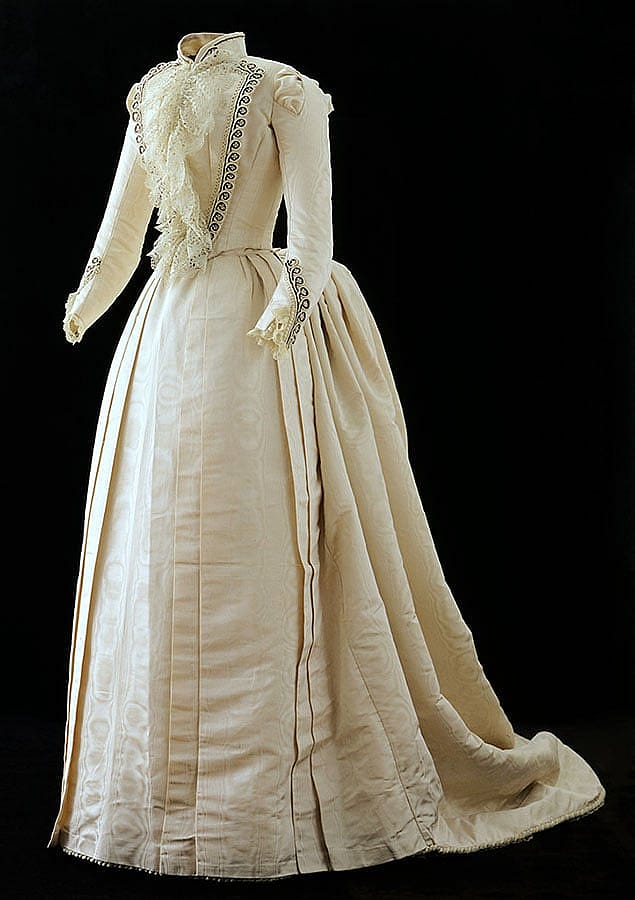Weddings on the Frontier – Points West Online
Originally published in Points West magazine
Fall 2005
Weddings on the Frontier: Tradition and Innovation
By Maryanne Andrus and Donna L. Whitson, PhD
My Own Darling Papa: Well dear this is my last evening that I will be Arta Cody for tomorrow I plight my troth to Hort.
Arta Cody’s words in a letter to her father, William F. “Buffalo Bill” Cody, on the eve of her marriage in 1889 were not unlike the words and feelings of most young women in the United States in the late nineteenth century. Weddings were thresholds of change in women’s lives, and most met this crossroad with mixed emotions—anticipation, excitement, trepidation, and even sadness. Weddings were also important social events, which marked a couple’s entry into community life.
In the mid-to-late 1800s, as thousands of Americans uprooted their families and migrated westward to an unsettled frontier life, some may have feared a loss of family tradition. In reality, the ways in which women of the West celebrated their weddings—traditions, fine clothing, and receptions—were rooted in Old World customs and influenced by a new ethic of respectability in the late Victorian Era. To ease the pangs of separation from families left behind, many found continuity by closely patterning their lives in the West on their family traditions from the East.
Even when resources were limited, brides made every effort to include Victorian customs in their simple wedding celebrations. These influences on romance, courtship, marriage customs and beliefs, and wedding fashions spread across the country through letters, travelers’ accounts, newspapers, magazines, and shared traditions.
The Victorian Era (1837–1901) was a time of great scientific and literary accomplishment in England and America. Despite the enlightened ideas in most areas of achievement, the period also gave birth to philosophies of marriage and gender roles that greatly restricted individual action. Socially, men and women lived in separate spheres, which caused anxiety about marriage prospects for single people. The opportunities to mingle, court, and engage in “lovemaking” (building a relationship through courting) were limited.
Many of the holiday games of young people addressed these shared worries. More than foretelling a happy or sad marriage, their games of divination and future-telling questioned if one would marry at all. Young people appealed to a fate beyond their control in parlor games of divination, calming their fears about becoming the lone bachelor or old maid and of missing the threshold into economic security that marriage offered. So when chance and society brought young people together, a girl might peel an apple in a single strand and toss the skin over a shoulder to fall in the form of her true love’s initials. She might also gaze at tea leaves, “pull the kale” (uprooting cabbages to read their future mate’s character by the form of the cabbage root), toss cats into new quilts, gaze in mirrors over a shoulder, and roast walnuts on the hearth—all to gain the assurance that a compatible future mate awaited.
As the Victorian Era matured, many of these early folk traditions gave way to a strong sense of propriety in wedding protocol that couples increasingly followed to gain standing in society. Mark Twain described the time period of 1878–1889 as the Gilded Age in America, due to enormous wealth among a few American industrialists. It was a time of conspicuous consumption and lavish lifestyles for the privileged few. The rest of the country emulated these individuals to the degree they could. As Cathy Luchetti wrote in her book Home on the Range: A Culinary History of the American West, “Gone were the days when a woman might wait months for a well-thumbed copy of Godey’s Lady’s Book or Peterson’s Magazine to instruct her in the newest development…. Up-to-date information was easily found in Harper’s Weekly, Scribner’s Monthly, The Saturday Evening Post, and more.”
Wedding gifts, an almost non-existent custom in the early 1800s, were expected from all wedding guests as the century wore on. Rather than providing basic household items, which implied that a bride’s father and soon-to-be husband could not provide these, wedding gifts were inordinately fanciful. “In addition to cash, couples now received silver cake baskets, sugar bowls, ice cream knives, napkin rings, and the like,” according to Ellen K. Roghman in Hands and Hearts: A History of Courtship in America. These gifts expressed confidence in the ability of the provider and upheld the ideal of domesticity. Gifts were intended as decoration rather than objects of function.
As weddings became more elaborate, not all a woman needed to set up house could be purchased or received as a gift. There was an increasing flurry in the last stages of courtship to be “fixing” for the household: shopping, sewing, packing, cleaning house, and always sewing more. “Assembling the clothing and linens for her trousseau was a woman’s most time-consuming task,” writes Roghman. The typical household and furnishings were changing by mid-nineteenth century, and the rising standard for middle class domestic life made couples face new demands. On the frontier, these demands were tempered by availability of goods and by distance between neighbors. However, a wedding held near Bozeman, Montana, in 1888 was as elaborate as those held in the East. The newspaper account of the wedding described “a long list of wedding gifts, beginning with a horse and cow,…a parlor stove,…a carpet,…six fruit sets, five water sets, two salt castors, two carving sets, two toothpick holders, three silver spoons and holders, and three silver butter dishes.”
On the frontier, weddings were especially valued as chances to socialize but were often tempered by practicality. The wedding date might be determined by the schedule of the circuit preacher, and peak work periods of farming and ranching were avoided. The wedding ceremony was usually conducted in the local church or at the bride’s home. A local preacher or justice of the peace would conduct a simple ceremony while family and friends crowded into cramped spaces to watch. The couple entertained their guests with music, food, dancing, and merrymaking, which went on late into the night. In the face of frontier circumstances, some couples made do with very little as illustrated by this instance quoted in Joanna Stratton’s Pioneer Women: Voices from the Kansas Frontier.
Upon arriving at their destination they were ushered down six steps into a dug-out, where the mother of the bride was preparing a wedding feast. There was but one room and…two chairs. A sheet had been stretched across one corner of the room. The bride and groom were stationed behind this. Soon after the neighbors came in…the bride and groom emerged arm in arm from behind the temporary curtain and stepping forward to where my father was sitting, all became quiet and he pronounced the words that made them one.
Even when there was little food to share, people enjoyed the festivity; it brought welcome relief from the monotony of work. “At a Montana ‘chivaree,’ a host of settlers turned out with ‘bells, whistles and even saws’ to serenade the newlyweds,” noted Luchetti. No food was offered, so the guests managed to find several apples and a cake to share. Often cooks would put out bowls of meat broth to curb appetites for the simple foods to follow…cornbread and black coffee with sugar….” Cake and cold water toasted the couple at another rural western wedding.
Wedding finery and custom for most weddings became more elaborate as the nineteenth century progressed, keeping pace with the increased formality of the Victorian Era. Wedding finery included engraved invitations and wedding dresses of white muslin, tulle, or silk. Church weddings required guest lists, organists, the minister, bridesmaids, and cutaway coats fitted for the men. Wedding dresses of white were often dressed with orange blossoms, a symbol of happiness and fertility. Wealthier families often paid dearly for this dress that was worn only once. Victorian wedding dresses were often made in France and could cost from $1,000 to $5,000 dollars.
Whether wedding celebrations were events of finery and formality or simple family gatherings, they marked a threshold of change for women and men of the nineteenth century. Customs and rituals helped young people overcome the reticence that the Victorian age bred into social situations and allowed them to pursue courting rites and marriage. While some frontier weddings were festive but spare, other western weddings were held with great ceremony and elegance. Following favored Victorian customs, both marked the beginning of wedded happiness and introduced the couple as new members in a community. Wedding celebrations affirmed a couple’s place in society. The new husband and wife crossed the threshold to start anew—a trustworthy, hardworking family unit, the beginnings of a new homestead, and a new anchor for the well-being of the community. As with all traditions, the wedding customs of the nineteenth century held these community values of work, trust, and shared happiness in a celebrated place of honor.
Arta Cody’s wedding dress
Arta Cody’s ivory wedding dress, in the collection of the Buffalo Bill Museum, exemplifies a late nineteenth century bride’s common aim: to create a wedding celebration that asserts the couple’s entrance into a changing middle class while upholding beloved traditions. Due to her family’s social and financial standing, Arta enjoyed a festive wedding with many of these fine customs. Her ivory dress followed the preference for symbolic finery that depicted purity, piety, and domesticity.
Although we don’t know the cost of Arta’s dress of ivory silk taffeta moiré (meaning wavy pattern to the fabric), it shows us her care over her wedding finery. The dress is an example of the containment of women during that time. Arta wouldn’t have been able to raise her arms higher than having her elbows at the waist when she wore the dress. Corseting was an often-painful experience. One company advertised its corset in the 1890s as “a shape with a swirling twist which gives it the grace of Lilly Langtfee and the ruggedness of Calamity Jane.”
Not only was physical activity severely limited by the corset, but women were also more prone to fainting as the garments affected breathing and circulation. Bustles came in and out of fashion but were all the rage at the time of Arta’s wedding. The bustle’s job was to “plump the rump” yet hide the female shape. The wool pad was made in a crescent shape and was worn at the back of the dress. Arta’s dress was donated to the Center in 1983 by her grandchildren and meticulously restored by museum conservators and volunteers who spent over 400 hours on its renovation.
About the authors
Maryanne Andrus is a former Curator of Education for the Buffalo Bill Center of the West. Donna Whitson is a retired professor from the University of Wyoming where she taught Adult Learning and Technology. She and her husband have served as volunteers in the Center of the West’s docent program.
Post 189
Written By
Nancy McClure
Nancy now does Grants & Foundations Relations for the Center of the West's Development Department, but was formerly the Content Producer for the Center's Public Relations Department, where her work included writing and updating website content, publicizing events, copy editing, working with images, and producing the e-newsletter Western Wire. Her current job is seeking and applying for funding from government grants and private foundations. In her spare time, Nancy enjoys photography, reading, flower gardening, and playing the flute.
